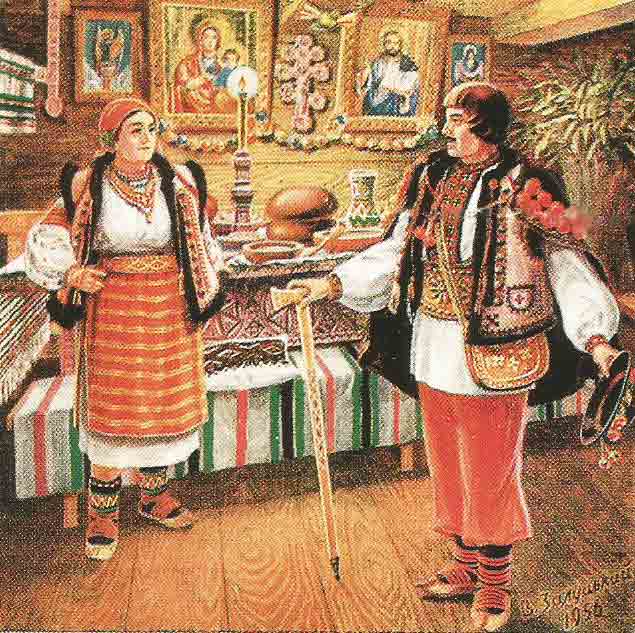Hutsuls are an ethnic group spanning parts of western Ukraine, Romania, Bukovina and Marmures. Although many regard them as a subgroup of the Ukrainians, mostly they regard themselves as part of a broader Rusyn ethnicity (originally Kievan/ Kyivan Rus). They fled to the Carpathian Mountains during the Mongol invasion.
However, archeological evidence of human existence in the region dates back 100,000 years and as early as the Neolithic Period (6,000 - 4,000 BC).
http://ukrainianpeople.us/hutsuls
Hutsul are recognized by their sheepskin vests and colorful embroilered costumes, predominately orange. Their language is Ukrainin with Polish influence.
The Hutsuls are very big on orange in their embroidery and weaving.
Hutsuls are one of the Ukrainian ethnic groups who inhabited the Carpathians. Living in desolate mountain areas, they preserved their long-time traditions, handicrafts and way of life. We will visit Hutsul sheep shepherds, who still keep their ancestors' lifestyle.
https://www.lonelyplanet.com
The Hutsul Republic was a short-lived state, formed in the aftermath of World War I. The republic was declared on January 8, 1919,
https://en.wikipedia.org
Hutsul wedding https://www.wdl.org
https://en.wikipedia.org
Sea of Mountains, the mysterious Hutsul region,
Written by Agnieszka Warnke, May 2019; translated by MB, Sep 2019
https://culture.pl
Ethnic Rights in Poland
"Poland's parliament on November 4, 2004 passed the National and Ethnic Minorities
Bill that explicitly outlines the status of the country's minority peoples, including
Lemkos. The bill lists by name all of the recognized ethnic and national minorities
that reside in Poland."
Definitions:
Ethnic - those lacking a state such as Roma, Tatars and Lemkos; and
Nationals - a community that has lived in Poland for at least 100 years and is part of a nation that has its own


